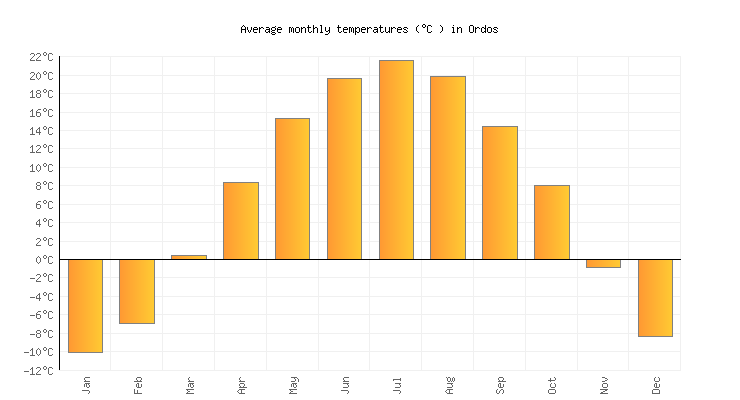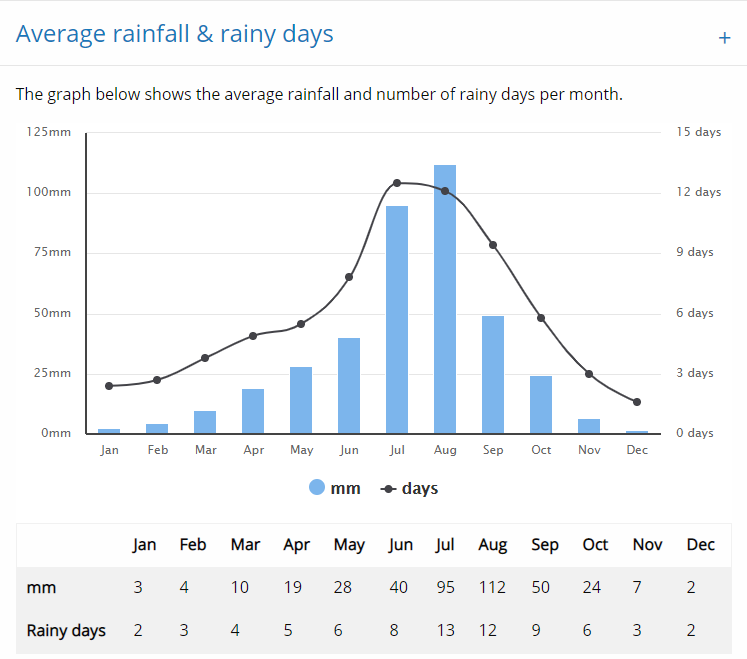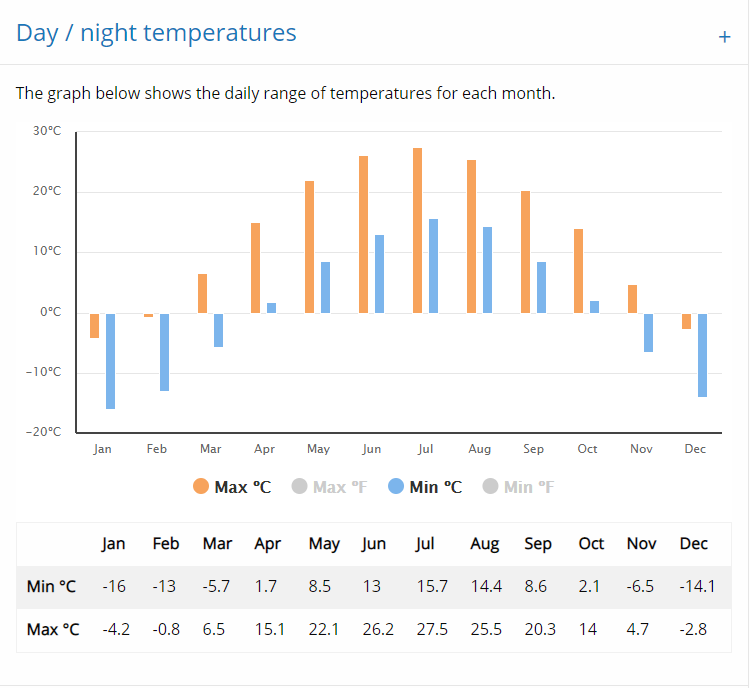
Ordos Climate
Ordos boasts a typical temperate continental climate with four distinctive seasons. Spring usually experiences sudden temperature rise with less precipitation and large evaporation, resulting in drought and dry climate. Summer is warm, with relatively concentrated rainfall, causing regional hail and frequent flood disaster. The temperature drops fast in autumn, companying by earlier frost and chilly weather. The winter is long, cold and windy with less snow. Annual average temperature is 5.3 ~ 8.7 ℃, January is the coldest month with the average temperature between - 10 ~ 13 ℃, while the hottest month falls on July with the average temperature between 21 ~ 25 ℃. The annual precipitation is 300 to 400 millimeters (11.8 to 15.7 in) in the eastern part of the prefecture, and 190 to 350 mm (7.5 to 13.8 in) in the western part, and the annual precipitation concentrated in July to September.
Climate Data Graphs for Ordos

The annual precipitation is 300 to 400 millimeters (11.8 to 15.7 in) in the eastern part of the prefecture, and 190 to 350 mm (7.5 to 13.8 in) in the western part. Most of the rain falls between July and September, with very little snow in winter.

The day and night temperature difference is large in Ordos.

Tips for Ordos Weather
Four Seasons of Ordos
Ordos features in four distinctive seasons with strong sunshine, low rainfall, and multiple spring sandstorms. it has drought and dry spring suffering sand storms, warm summer with the most plentiful rainfall in the year, cool autumn companied by earlier frost, and long, cold and windy winter with less snow. The coldest month is January while the hottest one is July in summer.
Best Time to Visit
The best time to visit Ordos is from May to October, in which period tourists can either avoids dust storms raging across the Ordos or appreciating gulls fly from north to the Bojiang Lake. In addition, August is the time for Nadam Festival to be held on the Ordos Prairie. The different activities held to worship the great Mongolian hero, Genghis Khan, on March 21st, May 15th, August 12th, and October 3rd in front of the Mausoleum of Genghis Khan, are traditional Mongolian folk culture activities, which should not be missed by tourists. It is the best opportunity for visitors to learn about the unique sacrificial culture, singing culture, dancing culture, and costume culture of the descendants of Genghis Khan. The festival presents the strong ethnic customs of locals, in order not to miss it, tourists should plan for the trip in advance according to the festival time schedule for convenience.
Packing Tips
- 1.The temperature difference between day and night in Ordos varies greatly, so you should prepare long-sleeved clothes for appropriate use and prepare raincoat for the changeable weather.
- 2. Inner Mongolia is located in the plateau, with long sunny days and strong ultraviolet, so you should prepare the sun hat, sunglasses and sunscreen.
- After July, there will be more mosquitos on prairie, you should prepare long pants and long-sleeved clothes, bring some mosquito repellent, besides, you had better wear traveling shoes instead of sandals to avoid mosquito bites.
Peak Seasons
The peak seaon for Ordos travel is also the best time to visit, which is summer and autumn (from May to October), but try to plan your Ordos tour to avoid the peak holidays. Because they are popular with Chinese tourists, Ordos attractions become more crowded in these periods.
The most crowded holiday periods in China are Chinese Spring Festival (usually in late Jan or early Feb), International Labor Day (May 01 to 03) and National Day (Oct 01-07). Spring Festival and the National Day golden week are the most crowded time for travelling.
Keep Reading












